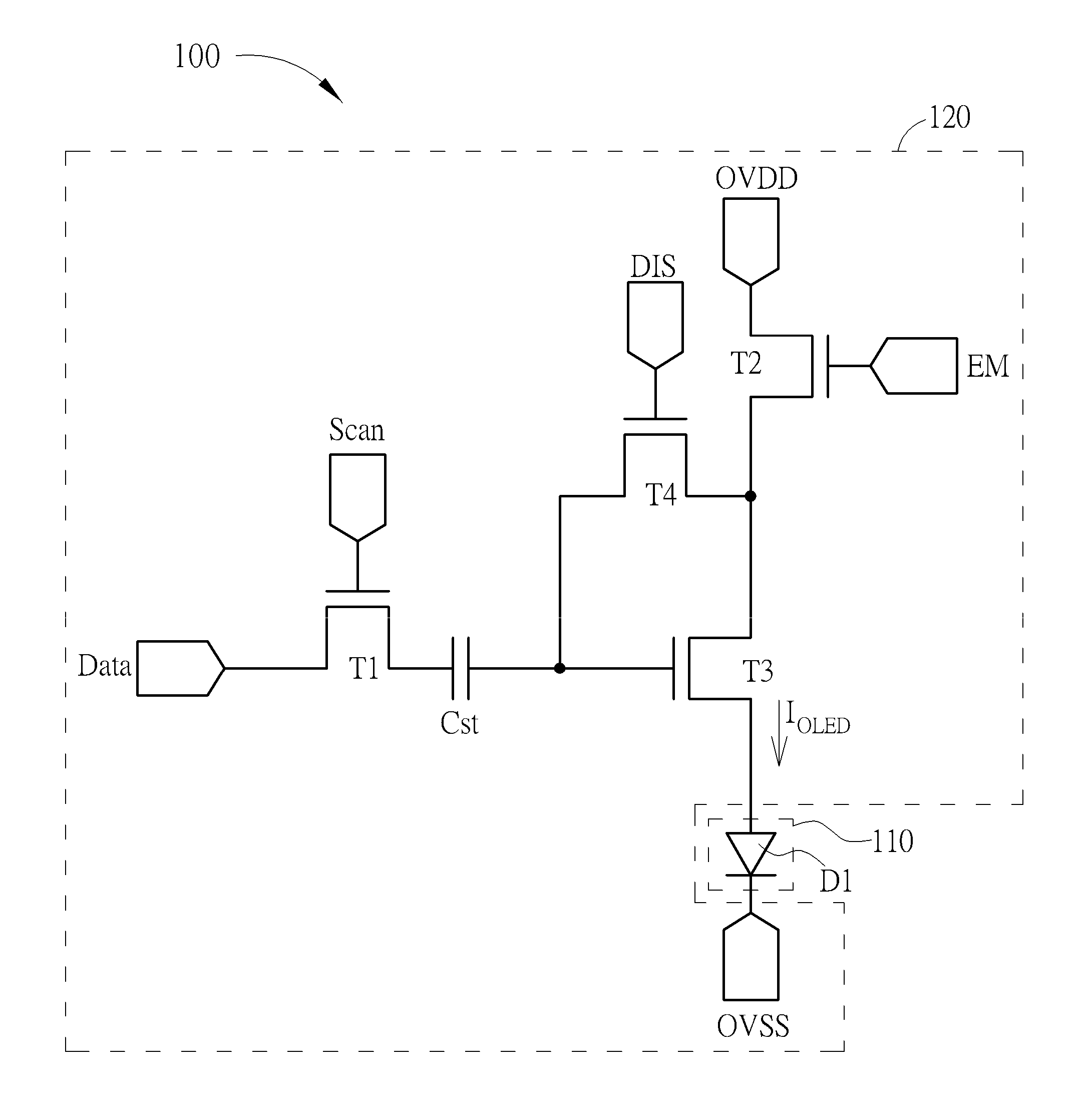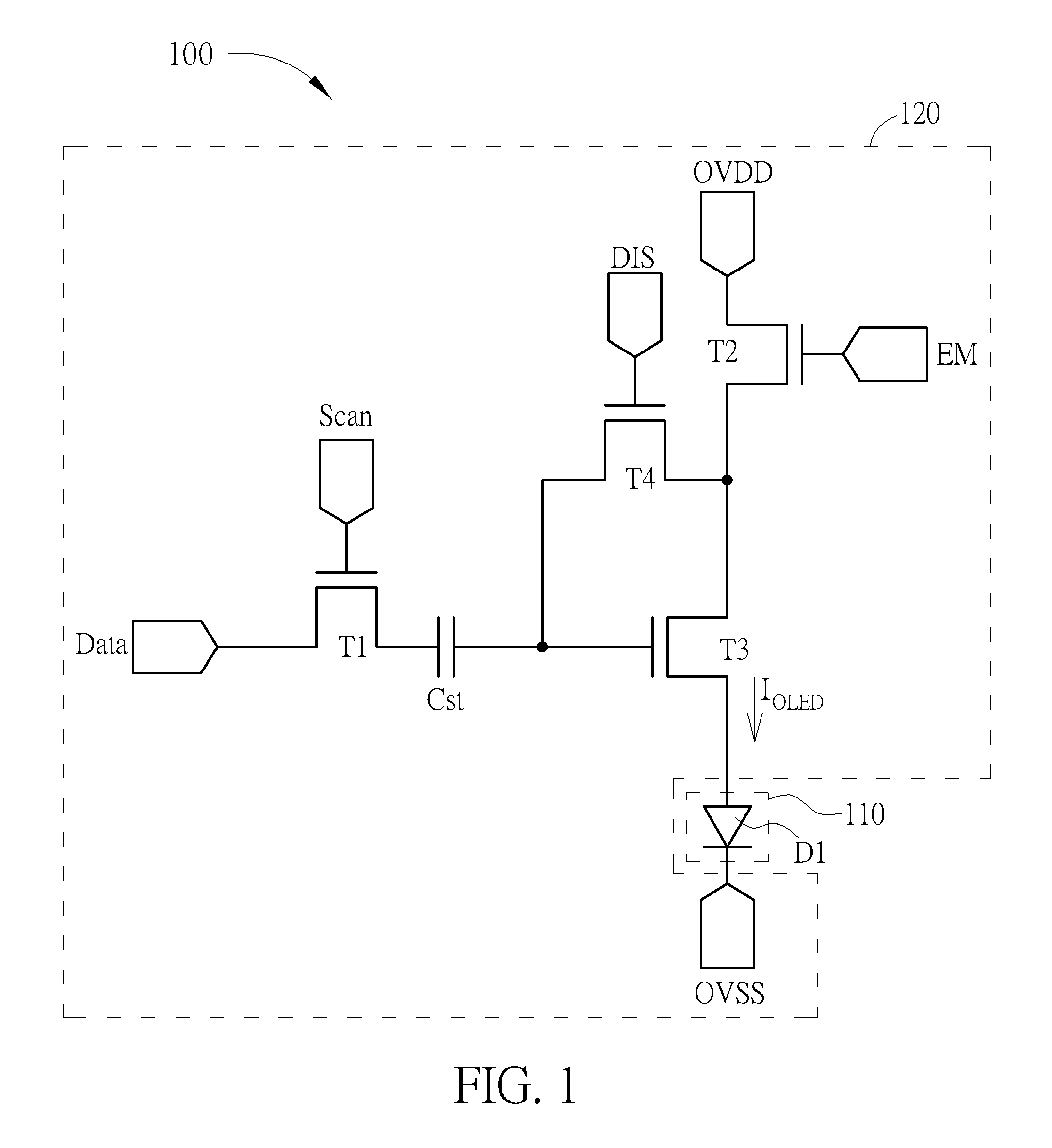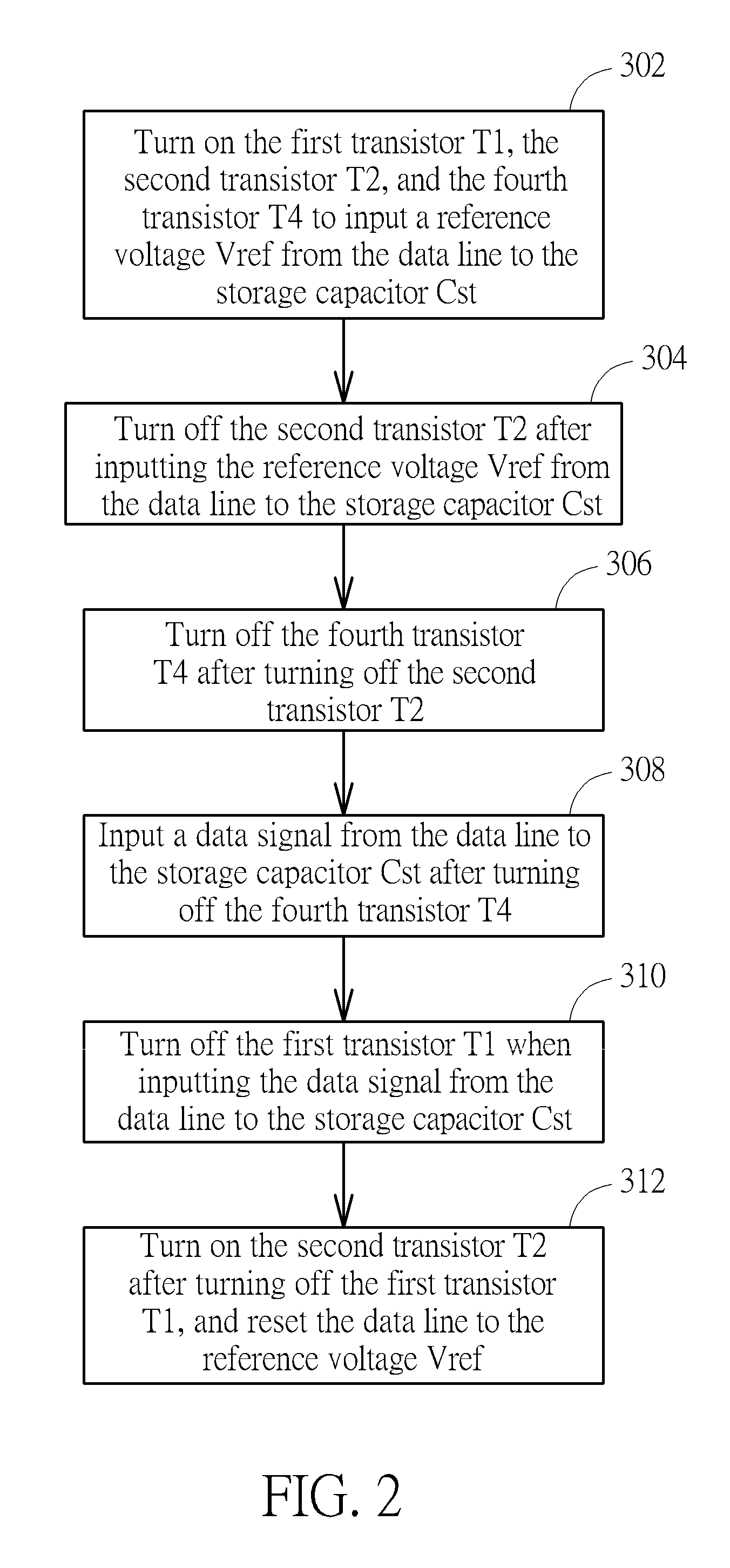Light emitting diode module
a technology of light-emitting diodes and modules, which is applied in the direction of electroluminescent light sources, static indicating devices, instruments, etc., can solve the problems of voltage drop from the voltage source, erroneous grey level, and instability of the switching components used to control the operating current and the brightness of the light-emitting diodes
- Summary
- Abstract
- Description
- Claims
- Application Information
AI Technical Summary
Benefits of technology
Problems solved by technology
Method used
Image
Examples
first embodiment
[0021]Please refer to FIG. 1 which shows a light emitting diode module 100 according to the present invention. As FIG. 1 shows, the light emitting diode module 100 comprises a light emitting unit 110 and a light emitting diode circuit 120. The light emitting unit 110 comprises a light emitting diode D1. The light emitting diode circuit 120 comprises a first transistor T1, a storage capacitor Cst, a second transistor T2, a third transistor T3, and a fourth transistor T4. The first transistor T1 has a first end configured to receive a data signal Data, a control end configured to receive a scan signal Scan, and a second end. The storage capacitor Cst has a first end coupled to the second end of the first transistor T1 and a second end. The second transistor T2 has a first end coupled to a first voltage source OVDD, a control end configured to receive an enable signal EM, and a second end. The third transistor T3 has a first end coupled to the second end of the second transistor T2, a ...
second embodiment
[0036]Please refer to FIG. 4 which shows the light emitting diode module 400 of the present invention. As shown in FIG. 4, the light emitting diode module 400 comprises a light emitting unit 410 and a light emitting circuit 420. The light emitting unit 410 comprises a light emitting diode D1. The difference between the light emitting diode modules 400 and 100 is the position of the light emitting diode D1. In the light emitting diode module 400, the light emitting diode D1 has a first end coupled to the first voltage source OVDD, and a second end. The second transistor T2 has a first end coupled to the second end of the light emitting diode D1, a control end configured to receive an enable signal EM, and a second end. The third transistor T3 has a first end coupled to the second end of the second transistor T2, a control end coupled to a second end of a storage capacitor Cst, and a second end coupled to a second voltage source OVSS.
[0037]Similarly, in the second embodiment, the curr...
PUM
 Login to View More
Login to View More Abstract
Description
Claims
Application Information
 Login to View More
Login to View More - R&D
- Intellectual Property
- Life Sciences
- Materials
- Tech Scout
- Unparalleled Data Quality
- Higher Quality Content
- 60% Fewer Hallucinations
Browse by: Latest US Patents, China's latest patents, Technical Efficacy Thesaurus, Application Domain, Technology Topic, Popular Technical Reports.
© 2025 PatSnap. All rights reserved.Legal|Privacy policy|Modern Slavery Act Transparency Statement|Sitemap|About US| Contact US: help@patsnap.com



